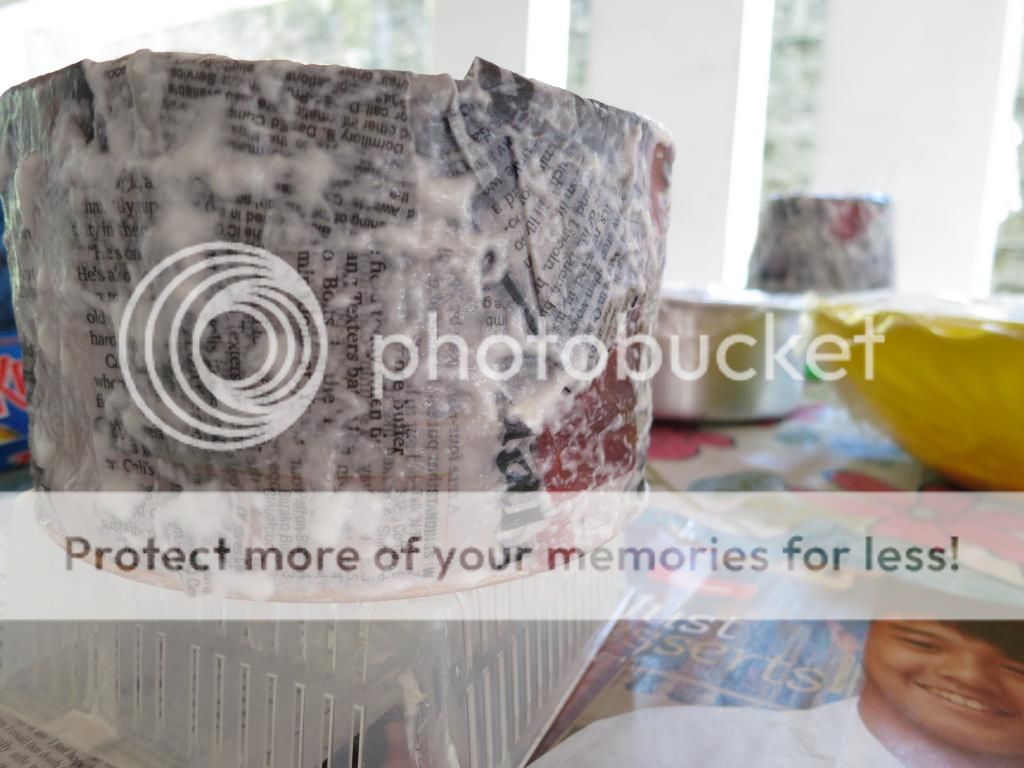What I liked about this handicraft project is that I didn’t need to buy anything at all. All I needed was flour, water, strips of paper or newspaper, old paintbrush, plastic/cling wrap, petroleum jelly, old plastic containers (for the mould) and paint. We spent around 35-45 minutes each morning for 5 days to finish it.

They start dipping the strips of newspaper in glue and stick them to the container. They use old paintbrush to paint in more glue. After each layer is done, they wait overnight. They repeat the process until they cover the bowl in 4 layers. Finally, they can paint! 🙂

1) The end product should be useful. The children should not “be employed in making futilities such as pea and stick work, paper mats and the like.”
2) Teach the children “slowly and carefully what they are to do.”
3) Emphasize the habit of best effort. “Slipshod work should not be allowed.”
4) Carefully select handicrafts or life skills to challenge but not to frustrate. “The children’s work should be kept well within their compass.”


“He practices various handicrafts so that he may know the feel of wood, clay, leather,
and the joy of handling tools, that is, that he may establish a due relation with materials.
But, always, it is the book, the knowledge, the clay, the bird or blossom, he thinks of,
not his own place or his own progress.”
– Charlotte Mason Vol6, p.331 [emphasis mine]


some handicrafts to consider:
ºbeading ºcalligrahy ºcarving ºceramics ºchalk drawing ºcharcoal sketching ºclay sculpturing ºcrocheting ºcross-stitiching ºembroidery ºfinger painting ºflower arranging ºgardening ºkiting ºknitting ºlatch hooking ºleather tooling ºloom weaving ºmacrame ºoil painting ºpencil sketching ºphotography ºpottery ºrobotics ºrubber stamping ºsewing ºwatercolor painting ºweaving ºwoodworking
some life skills to consider:
ºbaking ºcanning ºchanging a car tire ºcooking ºcleaning ºclearing the table ºfirst aid ºfishing ºorganizing ºsweeping the floor ºsetting the table ºfolding clothes

